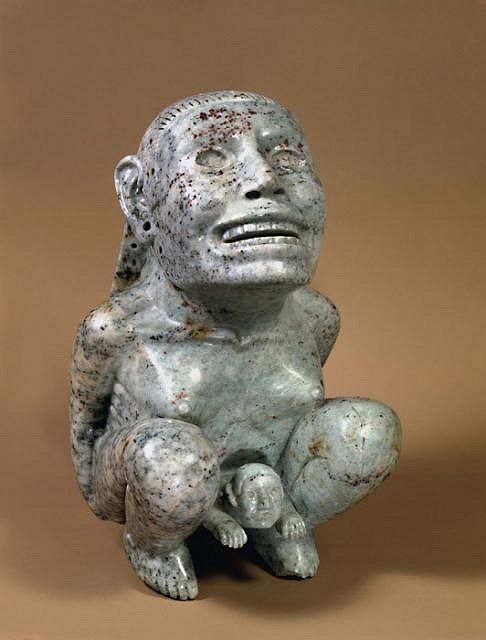K

Joined: Apr 17, 2010
Posts: 10
|
K

On 2013-04-12 00:32, Bay Park Buzzy wrote:
On 2013-04-11 23:26, bigbrotiki wrote:
Or other Asian wood-item manufacturing country? Maybe the lamps were re-imported to Tahiti?
The hardest part I guess I have with accepting your theory fully on the non Tahitian manufactured origin of these, is that for it to be true, then there couldn't have been a lathe in use in all of Tahiti. And that just seems too improbable to me. It would also have to entirely discredit Tahiti as having their own wood manufacturing economy altogether.
My counter argument: Lathes, in one mechanical form or another, were already widely in use for hundreds of years. It wouldn't make sense for there not to be any lathes in use in Tahiti. If they were working with wood there, then they would have had access to those tools for a long time by then.
My opinion on the execution of the carvings of these pieces on a lathe:
The piece of wood in those(your) carvings was definitely placed in lathe at some time, but that more likely would have been done in the log prep stage. Those carvings weren't done on a lathe totally, but the raw carving log was definitely prepped on a lathe. If you look at the way the carving was done, there are not any places that can be explained on the finished form from the use of a lathe. At most, the very tops of heads may have been partially formed on a lathe. That would minimally credit the use of a lathe in the manufacture of these carvings. However, the way the carver first removed the sides in relation to the original log footprint, shows that the only time a lathe would have been used on any of the profile was on the very exterior perimeter, and that was only initially. The first thing the carver did when carving the pieces was to chunk off the sides, effectively making it in a rectangular or elliptical form, both of which couldn't be produced with a lathe. That makes me think the log was debarked, and brought to a standard and consistent dimension by a logging mill type operation. The carver may have even bought his logs prepped on the lathe from the local lumber mill, or more likely speed cleaned his logs with his own lathe. Making the raw logs in a standard dimension on a lathe would have made it possible for the carver to stencil his pieces from one master, thus quickening the process of repeating many of the same pieces. Which seems in the tourist mass produced carving shop,would be the goal.
My final thought: Thinking that the pieces were made by another wood-item manufacturing country solely based on the tool marks, seems to ignore many simpler and practical explanations.
An open call to all of TC to help us finally get to the bottom of this. I've been thnking about this crap for years...
Does anyone out there have one of these with the original manufacturer tags or price stickers? How about an old dated tourist photo with dozens of these lined up in Tahitian flea market. maybe an old ebay listing with a verified factula account of their origin. Any of those would help....Anyone?
I'm also a woodworker and I think that's a very plausible and probably correct explanation. But it doesn't necessarily end there.
First of all, these were definitely hand-carved, no matter how the chuck marks got there. As an earlier poster pointed out: you simply can't do this sort of work on a lathe. And automated carving was nowhere near sophisticated enough to make even the latest of the vintage finds shown in this thread.
It's entirely possible that the piece remained chucked up during the hand-carving process, simply for the sake of stability and ease of handling. Carvers also use a turntable or a "carver's vise" to spin a piece rather than to have to walk around it or turn it in hand as well as to hold it stationary at odd angles.

But what brought me to this thread was the possible symbolic origin of the trio. The first set I saw was the one Blair has at Hale Pele, back when it was Thatch. I was skeptical about the common interpretation of their meaning. What I saw the instant I looked at them was: Fecundity, Birth, Death—womb to tomb. The Earth Mother births us and consumes us. At least that's the way a lot of pre-technological societies saw it. Apparently some of the reproductions appear to have the large figure straddling the smaller one, but are we sure that's not simply a misinterpretation on the part of the copyist, sort of like a 3D version of the old "Telephone" game, down through the years?
The stone figure posted earlier that the gold Indy Jones figure was based on is the pre-Columbian "Dumbarton Oaks Birthing Figure".
Cheers, all! What a fascinating thread!

|


